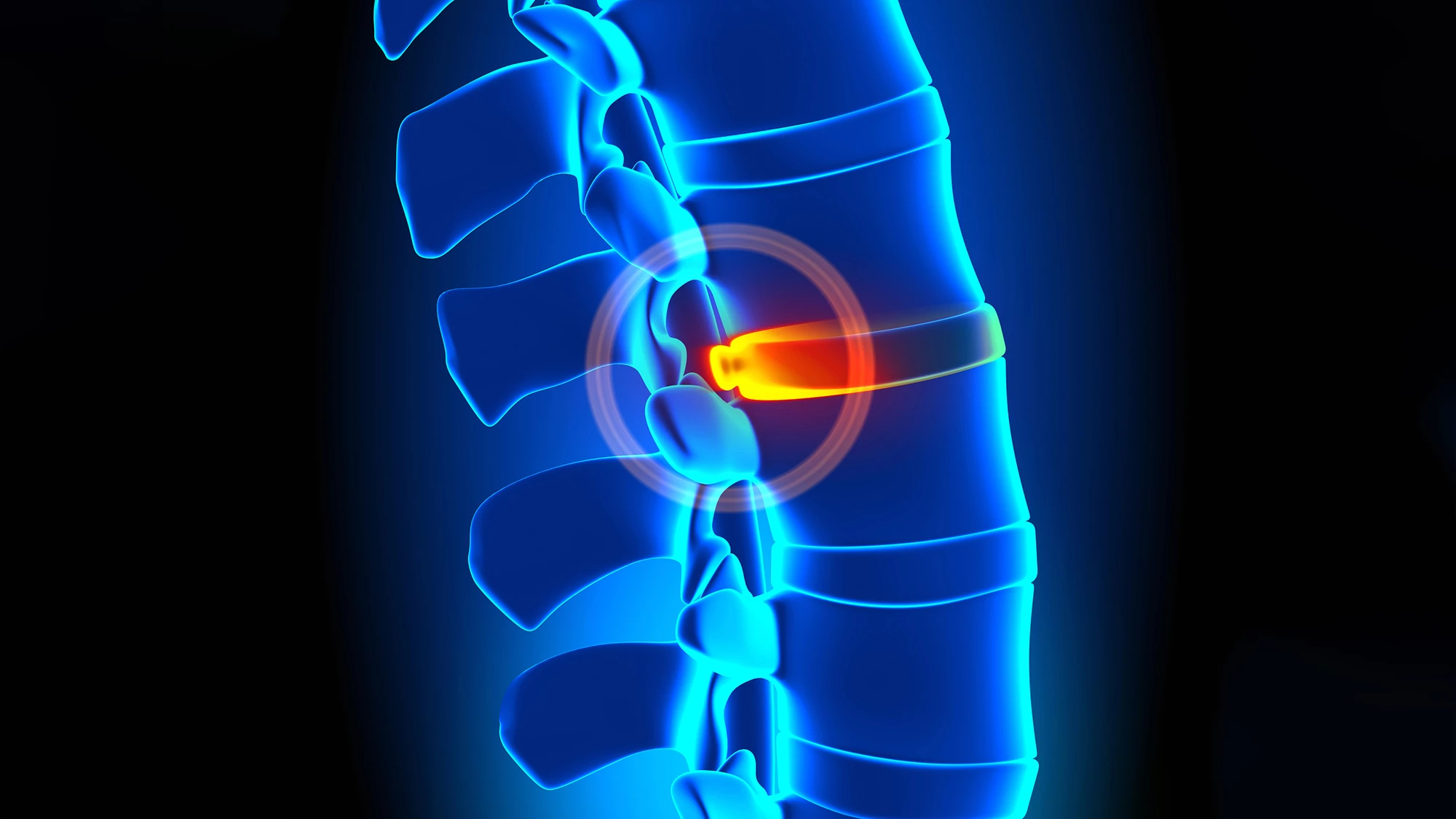Clinical trials of a new, minimally invasive treatment for degenerated spinal discs have produced impressive results, significantly reducing back pain severity and improving function. It could mean delaying surgical intervention or preventing it altogether.
The intervertebral discs between the spinal vertebrae comprise a gel-like core, the nucleus pulposus (NP), encased by a tough, fibrous outer ring. The NP’s high water content allows it to act like a shock absorber and pressure distributor in the spine. With age or injury, the NP degenerates, leading to chronic “discogenic” back pain.
VIVEX Biologics, a US-based biotechnology company that is focused on regenerative medicine, recently published the results of a clinical trial of VIA Disc NP, a non-surgical, minimally invasive treatment for supplementing degenerated disc tissue to treat discogenic pain. The results are very promising.
“The ability to effectively manage chronic lumbar discogenic pain in this patient group for a one-year duration with a single intradiscal NP procedure translated to correspondingly durable improvements in back function,” the researchers said.
The commercially available VIA Disc NP consists of human NP obtained from the donated disc tissue of deceased persons. The tissue is then morselized (chopped into small fragments or morsels) and sterilized. When it’s required, the donor NP is reconstituted with 2 ml of sterile saline and injected into the degenerated intervertebral disc (or discs). The procedure is done while the patient is awake but sedated. A local anesthetic is given at the injection site. Patients can return home the same day and resume normal activities the day after.
Twenty-eight participants (43% female) with an average age of 44 were enrolled in the VIA Disc NP clinical study. To be eligible, they had to have had lumbar discogenic pain for six or more months that was unresponsive to “conservative management,” including oral analgesics, structured physical therapy or a physical therapist-prescribed exercise program, chiropractic, and epidural steroid injections or nerve blocks. Moderate degeneration of up to two lumbar intervertebral discs was confirmed by an MRI scan.
Additional inclusion criteria for the study included having a baseline back pain severity score of six or more on an 11-point (zero to 10) numeric rating scale (NRS) and a back function score of between 40 and 80 points on the Oswestry Disability Index (ODI). The ODI provides a subjective percentage score of a person’s degree of function in performing activities of daily living. It’s considered one of the most accepted tools for assessing low back pain. An ODI score of 41% to 60% indicates a “severe disability” and a score of 61% to 80% indicates a person is “crippled.”
As it was a single-arm study, all participants received a single, intradiscal dose of 100 mg of VIA Disc NP to the affected disc(s) (some participants had two discs treated). There was a compulsory follow-up for all patients at four weeks post-procedure, with further follow-up at three, six, and 12 months. Of the 28 participants enrolled, 22 stayed for the full 12-month follow-up period. The primary objective of the study was to gauge the magnitude of improvement in back pain severity and back function at that time.
Participants reported a statistically significant decrease in NRS scores from 7.1 points at baseline to 3.8 points at 12 months. Almost 60% of them reported a 12-month back pain severity score of three or less. A corresponding clinical improvement in back function was also seen, with ODI scores falling from 53 at baseline to 24 at 12 months. Before the treatment, 82% of participants reported ODI scores that placed them in the “severe” or “crippled” category. By 12 months, that number had dropped to 18%. Whether participants had one or two discs injected did not affect the outcome.
“These findings confirm and extend our previous six-month followup report of this study group,” said the researchers, referring to their pilot study findings published in Pain Physician and available here as a PDF. “We noted no further degradation in treatment efficacy between six and 12 months.”
Mild-to-moderate adverse events (low back pain, back muscle spasms, and thigh pain) were reported that could’ve been related to the NP product or the procedure. All of them were resolved. There was one serious adverse event – injection site inflammation – definitely related to the procedure that also subsequently resolved. No secondary surgical interventions were needed.
The study’s small sample size, one serious adverse event, the lack of a control or placebo group, and the loss of participants before the 12-month mark are limitations that make the findings less generalizable. However, future studies can address these limitations, and the researchers said their findings are important for the future of back pain treatment.
“Lengthening the duration of treatment efficacy has important implications for the potential of intradiscal NP treatment in delaying more invasive surgical options such as disc arthroplasty or instrumented spine fusion,” they said. “Therefore, it remains essential that this study group continue to be followed longitudinally to assess the extent of treatment efficacy.”
The study was published in the journal BMC Musculoskeletal Disorders.





